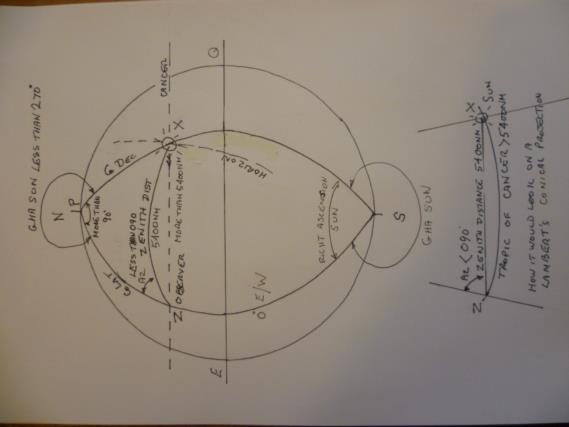
NavList:
A Community Devoted to the Preservation and Practice of Celestial Navigation and Other Methods of Traditional Wayfinding
From: David Pike
Date: 2020 Dec 20, 09:43 -0800
Robert
Thankyou for bringing this up. It’s good revision. If you’re still wondering, here’s my sixpenn’orth. As one who can’t hold onto more than the most basic trig formulae for more than 30 minutes and who never could remember which tropic is which, I find the best thing is to draw a diagram. The trick is to remember that you’re trying to project a sphere onto a flat piece of paper and that any triangle will be a spherical triangle. I.e., a triangle drawn on a sphere.
In the diagram below, I’ve drawn the 0 E/W meridian left of centre, so that you can see the sun rising above the observer’s horizon. Although the Sun is tracking along Cancer, a small circle, the shortest distance from the observer’s zenith to the horizon is 5400nm, the Zenith distance. The distance along cancer from the observer to the Sun, despite being called a small circle, is longer, because the lines are being drawn on a sphere. Similarly, if the angle between the 0 E/W meridian and Cancer is 90 degrees on the sphere, then the Sun’s azimuth is less that 090. Further below is the same thing drawn on a conical projection, which highlights these points. On reflection, for the summer solstice, I should perhaps have started with the Sun a touch further to the right (but it’s teatime). DaveP







